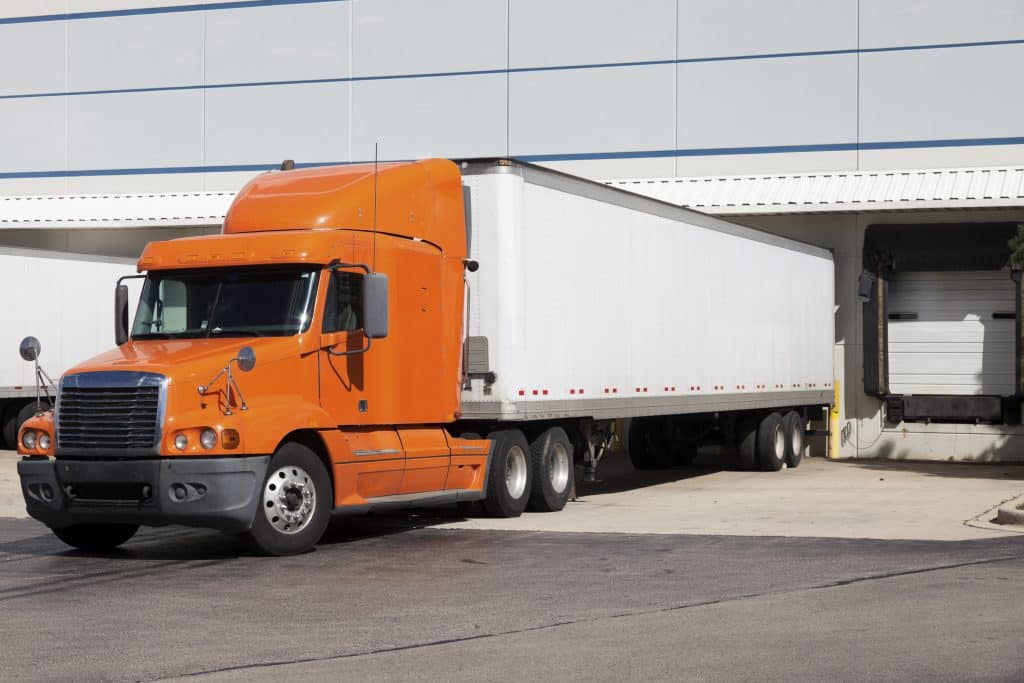How load planning software can help your fleet’s efficiency
Need to plan your loads faster than ever before? Find out how a transportation management system can help your business.

How long does it usually take your dispatcher to get a load planned and booked for your drivers?
From calculating miles to planning possible routes—this process can be time-consuming when you’re doing it all on your own or your team is using outdated methods.
You know that keeping your fleet as efficient as possible will help you and your business increase profits—so what can you do to spend less time planning a single load?
You can use load planning software—helping you get your loads planned, booked, and delivered more efficiently than ever before.
In this blog, we’ll give you insight into how your load planning strategy can improve by allowing this software to do most of the heavy lifting for you.
Why is load planning software important?

You know that planning your loads is crucial to getting them delivered in a timely manner, maximizing capacity, and making money for your business.
Load planning requires you, your dispatchers, and your drivers to be in sync, working together to make sure everything goes as smoothly as possible.
Your dispatchers and drivers need to work together to find the best routes, plan pick-ups and find places to stop at the end of the driver’s shift, among other duties.
And on your end as a fleet owner, you also need to have a complete understanding of the finances involved with delivering a load.
How much is fuel going to cost?
Does the truck need any maintenance before it’s dispatched?
What’s the projected profit if we take this load?
You know how it goes–and how long it can take to get all this information together, which elongates the process of finding, booking, and then delivering a load.
So, while load planning on a whiteboard the traditional way gets the job done—it can still use some improvements.
And that’s where software comes into play.
In recent years, software such as load boards and transportation management systems (TMS) have helped businesses like yours start simplifying the process of planning loads.
Loads boards, such as GPSTab’s Dispatch Board, help find and book loads that meet your specifications, and a TMS system helps plan them–from easily finding driver availability to calculating what it’s going to cost you and how much money you’re going to make.
A TMS can even help you maximize the capacity for each of your trucks–allowing you to get more loads delivered while requiring fewer vehicles on the road.
So, why does this matter?
Because it means that you can get your drivers loaded faster than ever before. They don’t have to wait hours for their next load after drop-off–their freight is already booked and planned so they don’t have to stay out of service for extended periods of time.
Additionally, it means that you’re spending less money on fuel and potential maintenance—as fewer trucks are required to be on the road when freight is planned efficiently.
What software can I use to plan my loads?
A transportation management system (TMS) can simplify the load planning process for you, cutting down on the time you and your team spend planning, and helping you dispatch trucks faster.
Think about your operation right now–can you say that you have a complete view of the load planning process?
Can you easily find where each of your trucks is going, when they’re projected to get to their destinations, and how much money they’re making you?
If you can’t then you’re not alone. Roughly 62% of logistics providers said they had limited visibility when it comes to their supply chains, according to GEODIS.
That’s where a TMS comes in–not only can you quickly keep tabs on your fleet, but you can also view in-depth reports that provide you with insight into the efficiency of your fleet.
Want to find out how much fuel your trucks are using when they idle?
Or would you like to know which routes are making you the most money?
With these reports at your fingertips, you can make more informed decisions for your business based on the performance of your own fleet.

And the best part?
Your load planning process can benefit greatly from this kind of data.
For example, you can compare different routes that your drivers had taken previously to find which one worked best by looking at fuel costs, your cost per mile, and the profits made.
This will help inform future decisions when it comes to optimizing your routes, decreasing your costs, and overall making your business more money.
How does load planning software save money?

Load planning software can be a crucial factor in saving and making your business more money because of its capability to help you plan faster than ever before.
As you know, by putting together an in-depth plan for each of your loads, you can maximize capacity and cut down on costs for each trip.
So what if you could do all that in a fraction of the time?
Let’s say you’ve got multiple loads, but need a truck with the capacity to pick them all up.
Rather than potentially spending hours making multiple calls to find a driver–you could easily use your TMS to view a list of available trucks in seconds, filtered by the weight and capacity that you need.
Then you can use your TMS to calculate the best routes for your driver, in addition to your projected profits, by using prior pricing on similar routes. This is a massive time-saver, as calculating this on your own can also be time-consuming.
Your TMS will give you a high-level outlook of the entire process in minutes, helping you get the most out of each shipment by gaining more insight into your existing lanes, costs per mile, and goals for potential quotes in the future.
What is the best load planning software?

The best load planning software available is a transportation management system (TMS), as it gives you immediate access to all the information you need to book loads and plan them out faster.
A system such as UNIQ TMS can help you start booking and planning loads in a fraction of the time, while also providing you with the reports you need to make changes to your fleet and start increasing efficiency and profits.
UNIQ TMS is equipped with a variety of user-friendly features that help you manage your fleet as a whole:
- Freight optimization tools that calculate routes, rates, and profits by comparing prior pricing on similar routes.
- Accounting features that help you cut down on the time you spend invoicing by 70%.
- Easy-to-use safety module that helps you keep track of driver records, licenses, medical cards, drug tests, and scorecards.
- Preventative maintenance notifications that help keep your equipment on the road and safe.
Want to see how UNIQ TMS can help you start planning loads faster? Schedule a quick free demo at uniqtms.com.





